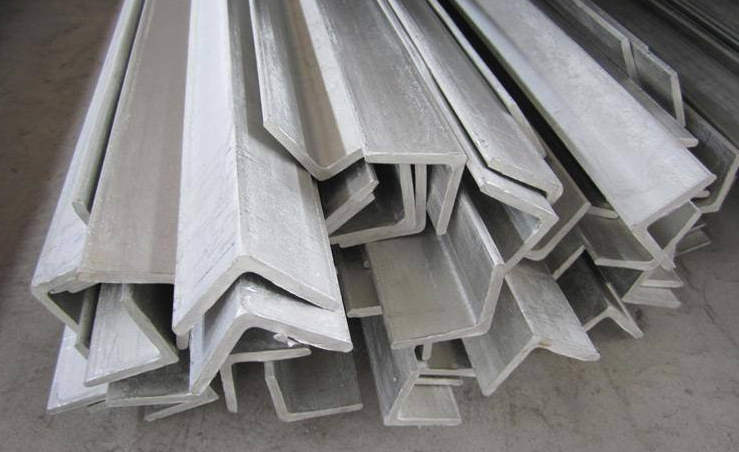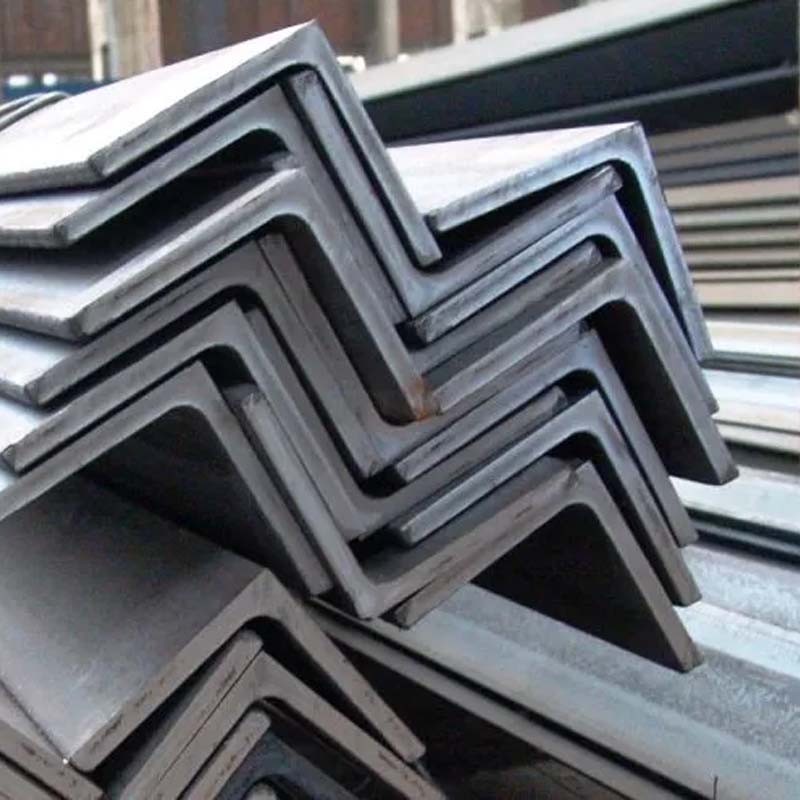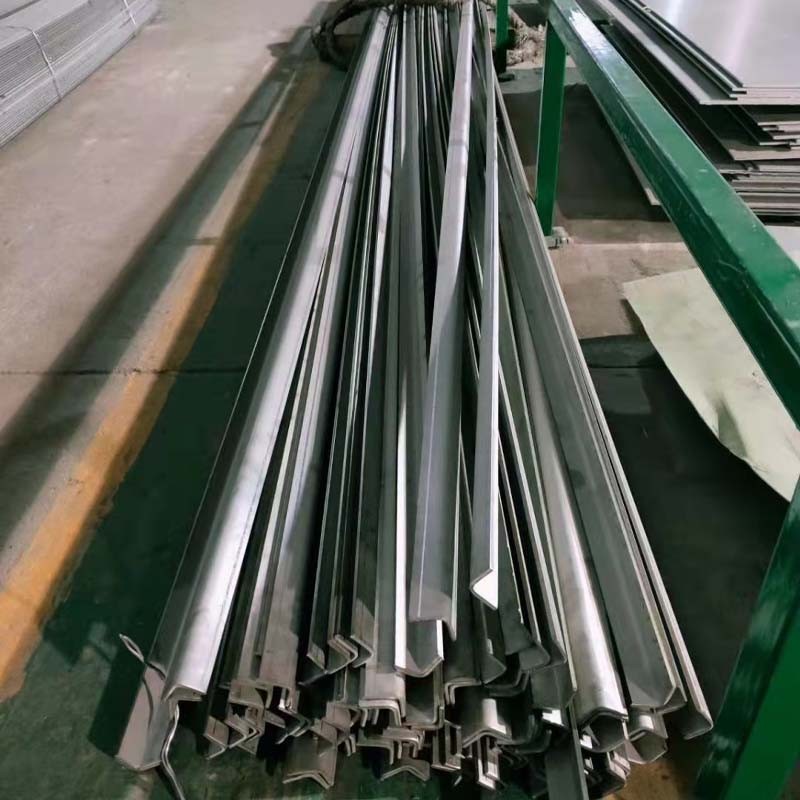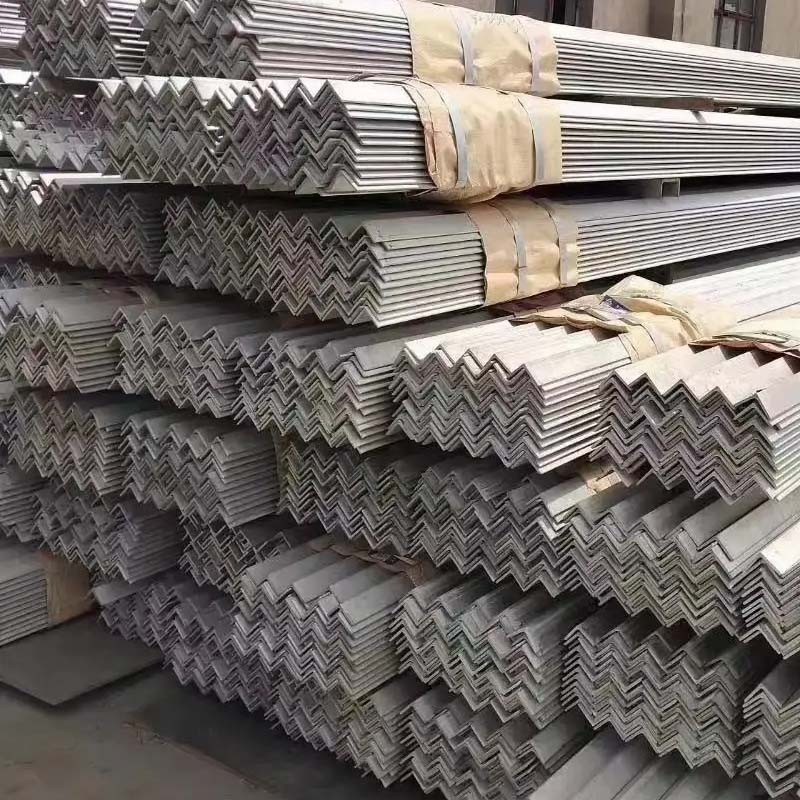Stainless steel angle refers to the two sides perpendicular to each other into an angle shape of a long steel, usually equal stainless steel angle and unequal stainless steel angle points, and equal stainless steel angle refers to its two sides are equal in width. Stainless steel angle can be structured according to the different needs of a variety of different stress components, of course, can also be used as a component connector, in the modern era is widely used in a variety of building structures and engineering structures.
Stainless steel angle production process
There are two main processes for the production of stainless steel angle, namely laser welding and hot rolling. Hot rolled stainless steel angles are more affordable. They usually have rounded or tapered edges. On the other hand, laser fusion welded SS angles have consistent, sharp and square corners. They are also sandblasted and have a smoother surface. Laser fused stainless steel angles have a higher surface finish than hot rolled stainless steel angles.
Stainless steel angle has many characteristics, such as:
1, with a hollow cross-section, a large number of pipelines used for the transportation of fluids;
2, one of the most widely used steel for metal products for construction, mainly used for roof doors and other occasions with high stiffness requirements;
3、Excellent work hardening properties.
4、Excellent corrosion resistance
5、 Excellent machinability, molding and welding properties
6、 Resistance to oxidation
7、 Excellent mechanical properties
8、 Temperature resistant Wear resistant
Stainless steel angles are used in the manufacture of brackets and frames as well as in fabricated assemblies and general engineering. They are also used for edge protection and edge decoration. In addition, they are used for welded or woven screens in mining, springs, threaded fasteners, water and quarry filtration, heat exchangers, architectural railings, decorations, paneling, chemical containers, food preparation equipment, etc.
1. construction field stainless steel angle is often used in the decoration, structure and support of the building, such as making corner yards, door and window frames, staircase handrails and so on.
2. machinery field stainless steel angle in machinery manufacturing is also widely used, such as the production of bearings, transmission gears, machine tool support.
3. chemical field stainless steel angle has excellent corrosion resistance, in the chemical field is often used to make containers, pipelines, valves, etc.
4. other fields stainless steel angle can also be used to make ships, automobiles, electronics and other fields of parts and components.
In short, stainless steel angle has excellent performance characteristics and a wide range of applications, is an important stainless steel products.

The specification size of stainless steel angle is reflected by its model number. Commonly used models in China are L-type, I-type, equilateral angle, etc., while internationally there are C-type, U-type, Z-type and other models. The size and thickness of the stainless steel angle size also differ, and must be selected in accordance with the specifications and actual use. In specific applications, should also pay attention to stainless steel angle hardness, toughness, processability and corrosion resistance and other aspects of the indicators. The following are common national implementation standards
Chinese standard.
GB/T 706-2016 "hot rolled steel sections
This standard specifies the hot rolled I-beam, hot rolled channel steel, hot rolled equilateral angle steel, hot rolled unequal angle steel, hot rolled order content, size, shape, weight and allowable deviation, technical requirements, test methods, inspection rules, packaging, marking and quality certificate. This standard applies to hot rolled equilateral angle steel, hot rolled unequal angle steel and hot rolled I-beam and hot rolled channel steel with sloping inside leg.
American Standard:
ASTM A276 standard specifies the chemical composition, mechanical properties, processing performance and marking information of stainless steel angle, ASTM A276 standard also specifies the processing performance index and marking requirements of stainless steel angle, which makes it easier for users to identify and select the required materials.
British Standard:
BS EN 10056-1 The standard specifies the stainless steel and other materials, "hot rolled equilateral equilateral angle" size, shape, allowable deviations and technical requirements.
Japanese Standard: JIS G 4317 This standard covers the chemical composition, mechanical properties and dimensional tolerances of stainless steel angles.
Because of the wide range of uses of stainless steel angle, there are many specifications, and different specifications of the size of the use is not the same.
The following are some common product specifications
1、Width 20mmx20mm;thickness 3mm
2、Width 25mmx25mm; thickness 3mm, 4mm, 5mm
3、Width 30mmx30mm;thickness 3mm,4mm,5mm
4、Width 40mmx40mm ;thickness 3mm,4mm,5mm,6mm
5、Width 50mmx50mm;thickness 3mm,4mm,5mm,6mm,7mm,8mm
6、Width 60mmx60mm;Thickness 5mm,6mm,7mm,8mm
7、Width 65mmx65mm ;thickness mm, 6mm, 7mm, 8mm
8、Width 70mmx70mm ;thickness 6mm,7mm,8mm,9mm,10mm
9、Width 75mmx75mm ; Thickness 6mm,7mm,8mm,9mm,10mm
10、Width 80mmx80mm ; Thickness 7mm,8mm,9mm,10mm
11、Width 100mmx100mm ; thickness 8mm, 9mm, 10mm, 12mm
Allowable deviation of stainless steel angle:
1.Size deviation
Angle steel national acceptance standards allow dimensional deviations including length, width, thickness, equilateral angle and burr length. Specifically, the allowable length deviation is ±5mm or 0.5%, whichever is greater. The allowable deviation for width and thickness is ±2mm or 0.2m, whichever is greater. For equal corners and length of burrs, the allowable deviation range is ±1mm or 0.2mm, whichever is greater.
2.Weight deviation
The weight deviation allowed by the national acceptance standard for angles refers to the difference between the weight of the angle and the specification. The permitted weight deviation range is 4% or ±0.5KG, subject to the larger value of measurement.
3. Chemical composition deviation
Angle national acceptance standards in the chemical composition deviation refers to the chemical composition contained in the angle and the difference between the national standard requirements. Allowable range of chemical composition deviation is measured and tested in accordance with the requirements of national standards, and its allowable deviation is implemented in accordance with national standards.
The permissible deviations are intended to adjust for the effects of factors in manufacturing and processing. to ensure that the final angle product meets the requirements of national standards. These allowable deviations reduce uncertainty in the production process and help to ensure the conformity and reliability of the angle products.











